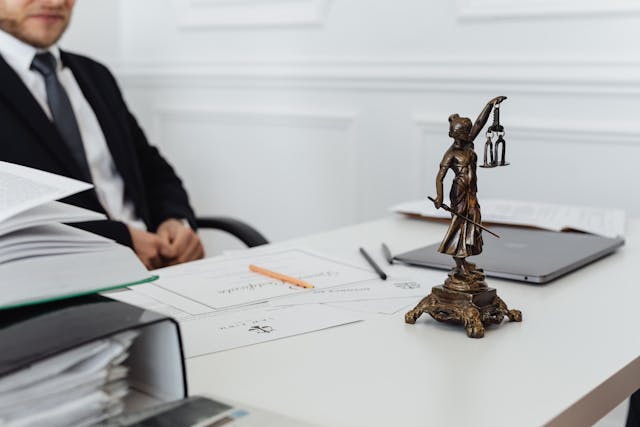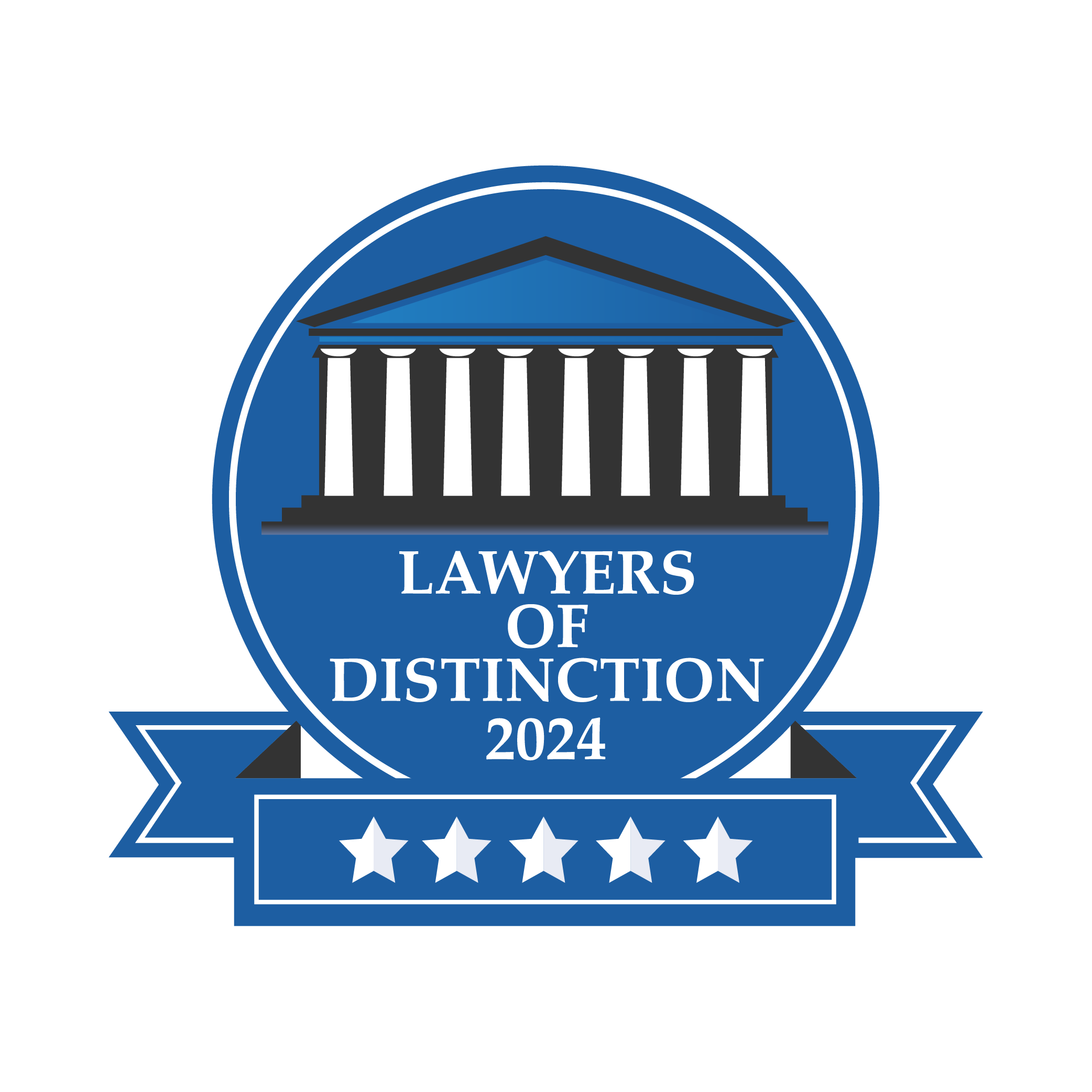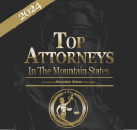When you’re dealing with a car accident or personal injury claim in Nevada, the rules about what evidence is allowed can make the difference between winning and losing your case. Nevada’s rules of evidence control what information a judge or jury is allowed to see, significantly shaping your case. Not everything you, a witness, or the other side knows will be admitted in court, so knowing how these standards work is essential for anyone working with a Las Vegas personal injury attorney.

40+ Years of ExperienceMillions RecoveredNo Win No Fee
What Are Nevada's Rules of Evidence in An Accident?
Learn how Nevada’s rules of evidence affect accident cases, including admissible evidence, hearsay, privileged communication, and settlement talks.
What Is Relevant Evidence in a Nevada Accident Case?
Relevant evidence in a Nevada accident case is defined by NRS 48.015 as any information that makes a disputed fact more or less likely to be true compared to if the evidence wasn’t considered. In simpler terms, relevant evidence helps prove or disprove something important about the claim or the other person’s defense.
NRS 48.015 “Relevant evidence” defined. As used in this chapter, “relevant evidence” means evidence having any tendency to make the existence of any fact that is of consequence to the determination of the action more or less probable than it would be without the evidence.
For example, in a slip-and-fall case, a photo that shows water on the grocery store floor right where you slipped is highly relevant – it directly supports your claim. Security video confirming your fall or eyewitness statements about the spill would also be very relevant.
On the other hand, your unrelated personal history – like the fact that you were late for an appointment that day – is usually not relevant. That’s because these details don’t help establish what really happened or who was at fault for the fall.
What Makes Evidence Admissible in Court in Nevada?
Not everything that’s relevant to an accident claim in Nevada gets admitted in court. Under Nevada Rule of Evidence 403, the judge must weigh whether the value of the evidence (its ability to actually help prove a fact) outweighs the risk that it will create unfair prejudice, confuse the issues, or mislead the jury.
NRS 48.035 Exclusion of relevant evidence on grounds of prejudice, confusion or waste of time.
1. Although relevant, evidence is not admissible if its probative value is substantially outweighed by the danger of unfair prejudice, of confusion of the issues or of misleading the jury.
2. Although relevant, evidence may be excluded if its probative value is substantially outweighed by considerations of undue delay, waste of time or needless presentation of cumulative evidence.
This means even if evidence is technically relevant – like a photo of injuries or a statement from a bystander – it can still be excluded. The court will keep evidence out if its main effect would be to inflame the jury’s emotions, paint a party in a bad light for non-legal reasons, or distract the jury from the real dispute.
For example, extremely graphic accident scene photos might be kept out of court if the main purpose is likely to shock or upset the jury, rather than explain what injuries or damage occurred. Understanding relevant vs inadmissible evidence is important for anyone involved in a personal injury case.
Understanding the Hearsay Rule in Nevada Accident Cases
The hearsay rule, found in NRS 51.035, is important for anyone facing a Nevada accident case. Hearsay is when a witness in court tries to repeat something another person said outside of court, and it’s usually not allowed because it’s hard to confirm if it’s true or trustworthy. There are some exceptions to this.
NRS 51.035 “Hearsay” defined. “Hearsay” means a statement offered in evidence to prove the truth of the matter asserted unless:
1. The statement is one made by a witness while testifying at the trial or hearing;
2. The declarant testifies at the trial or hearing and is subject to cross-examination concerning the statement, and the statement is:
(a) Inconsistent with the declarant’s testimony;
(b) Consistent with the declarant’s testimony and offered to rebut an express or implied charge against the declarant of recent fabrication or improper influence or motive;
(c) One of identification of a person made soon after perceiving the person; or
(d) A transcript of testimony given under oath at a trial or hearing or before a grand jury; or
3. The statement is offered against a party and is:
(a) The party’s own statement, in either the party’s individual or a representative capacity;
(b) A statement of which the party has manifested adoption or belief in its truth;
(c) A statement by a person authorized by the party to make a statement concerning the subject;
(d) A statement by the party’s agent or servant concerning a matter within the scope of the party’s agency or employment, made before the termination of the relationship; or
(e) A statement by a coconspirator of a party during the course and in furtherance of the conspiracy.
Statements that were made in the heat of the moment (excited utterances), reliable business or medical records, or personal observations shared directly with a doctor can sometimes come in even if the person who made them isn’t present in court. The basic rule is that most secondhand statements aren’t allowed unless they fit a specific legal exception
What Is Privileged Communication in Nevada’s Accident Cases?
Privileged communication in Nevada personal injury and accident cases refers to certain private conversations that are protected by law and cannot be used as evidence in court. This privilege covers interactions like attorney-client discussions, doctor-patient communications, and communications made between spouses.
For example, anything you tell your lawyer while preparing your claim is shielded by attorney-client privilege, meaning the court can’t force your lawyer or you to reveal those conversations. Privileged communication is designed to encourage open, full disclosure within these relationships, and except for very rare exceptions, those conversations are off limits at trial.
What Is Discovery in a Nevada Accident Case?
Discovery in a Nevada accident case is the process where both sides gather and exchange information before trial. This pretrial phase helps everyone understand the claims, defense, and evidence each side has. Several tools are used in discovery, such as:
- Depositions: Sworn, out-of-court statements where witnesses or parties answer questions in person.
- Interrogatories: Written questions that must be answered in writing.
- Requests for Production: Demands for documents (like accident photos, medical records, or repair bills) the other side must provide.
- Requests for Admissions: Requests that the other party admit or deny specific facts to simplify the issues for trial.
Not all evidence found during discovery will go before the judge or jury – some may be excluded later for being irrelevant or violating Nevada rules of evidence.
Burden of Proof in Nevada Accident Cases: What Does It Mean?
In Nevada accident cases, the burden of proof means that the person bringing the lawsuit (the plaintiff) has to show their version of what happened is more likely true than not. This is known as preponderance of the evidence. They have to prove it’s at least 51% likely their story is true. This standard isn’t as strict as “beyond a reasonable doubt” used in criminal cases, but the plaintiff has to provide enough credible evidence to tip the scale in their favor.
How to Use Nevada’s Rules of Evidence to Strengthen Your Accident Case
Nevada’s rules of evidence help attorneys build a case. They use these rules to get helpful photos, records, and testimony admitted and to block unreliable or unfair information from coming in. Attorneys also file motions in limine before trial to exclude questionable evidence and make well-timed objections during the trial itself.
Offers of Compromise: What Happens to Settlement Talks in Court?
In Nevada accident cases, any settlement offers or negotiations between the parties – sometimes called “offers of compromise” – cannot be used in court to prove someone was at fault for an accident. The law specifically prevents these discussions from being admitted as evidence of liability.
This is because it’s in everyone’s best interest if a settlement is reached before going to court – it saves everyone time, stress, and money. If parties have to worry that their offers and settlement talks will be used against them, cases are much more unlikely to settle.
Why You Need an Experienced Lawyer Who Understands Nevada’s Evidence Rules
Working with an experienced Las Vegas personal injury lawyer can make all the difference when it comes to handling evidence and courtroom rules. A lawyer knows how to use evidence to build your case – keeping helpful evidence in and preventing unfair evidence from being introduced in court. You don’t need to handle these situations on your own. Contact us today to schedule a free consultation and get honest advice on protecting your rights and building your case.

